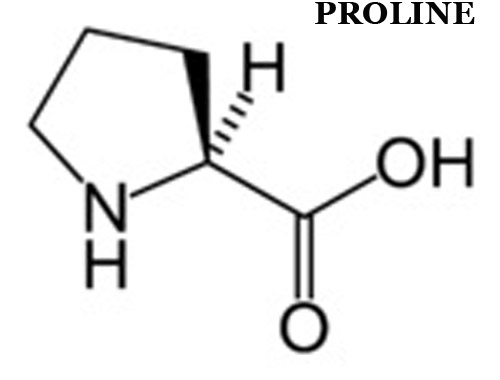Hyperprolinemia

Published: 18 Jun 2025
ICD9: 253.1 ICD10: E22.1 ICD11: 5C50.8
Hyperprolinemia refers to a group of rare genetic metabolic disorders characterized by an abnormally high level of proline in the blood.
Proline is a non-essential amino acid, meaning the body can usually produce it itself. However, in individuals with hyperprolinemia, there is a defect in the enzyme(s) responsible for breaking down proline, leading to its accumulation.
There are two main types of hyperprolinemia:
![]() Type I Hyperprolinemia: This is caused by a deficiency in the enzyme proline oxidase (also known as proline dehydrogenase), which is the first enzyme in the proline degradation pathway.
Type I Hyperprolinemia: This is caused by a deficiency in the enzyme proline oxidase (also known as proline dehydrogenase), which is the first enzyme in the proline degradation pathway.
![]() Type II Hyperprolinemia: This is caused by a deficiency in the enzyme Δ-1-pyrroline-5-carboxylate dehydrogenase (P5CDH), which is the second enzyme in the proline degradation pathway. Type II hyperprolinemia also results in elevated levels of Δ-1-pyrroline-5-carboxylate (P5C) in the blood.
Type II Hyperprolinemia: This is caused by a deficiency in the enzyme Δ-1-pyrroline-5-carboxylate dehydrogenase (P5CDH), which is the second enzyme in the proline degradation pathway. Type II hyperprolinemia also results in elevated levels of Δ-1-pyrroline-5-carboxylate (P5C) in the blood.
Symptoms and Clinical Significance:
![]() Type I Hyperprolinemia: Often asymptomatic. Some individuals may experience neurological problems, intellectual disability, seizures, or psychiatric disorders. However, the link between elevated proline levels and these symptoms is not always clear, and many individuals with Type I hyperprolinemia never develop any health problems.
Type I Hyperprolinemia: Often asymptomatic. Some individuals may experience neurological problems, intellectual disability, seizures, or psychiatric disorders. However, the link between elevated proline levels and these symptoms is not always clear, and many individuals with Type I hyperprolinemia never develop any health problems.
![]() Type II Hyperprolinemia: Can be more severe. Symptoms may include seizures, intellectual disability, and neurological abnormalities. It can also be associated with kidney problems.
Type II Hyperprolinemia: Can be more severe. Symptoms may include seizures, intellectual disability, and neurological abnormalities. It can also be associated with kidney problems.
Diagnosis:
Hyperprolinemia is usually diagnosed through blood tests that reveal elevated levels of proline. Genetic testing can confirm the specific type of hyperprolinemia.
Treatment:
There is no specific cure for hyperprolinemia. Treatment focuses on managing the symptoms and complications that may arise. A low-proline diet has been suggested, but its effectiveness is debated, and it can be difficult to maintain. Medications may be used to control seizures or other neurological symptoms.
Inheritance:
Both types of hyperprolinemia are inherited in an autosomal recessive pattern. This means that an affected individual must inherit two copies of the mutated gene (one from each parent) to develop the disorder. Individuals who inherit only one copy of the mutated gene are carriers but do not typically exhibit symptoms.
In summary: Hyperprolinemia is a rare genetic disorder characterized by high levels of proline in the blood. There are two main types, each caused by a deficiency in a different enzyme involved in proline breakdown. While some individuals may be asymptomatic, others can experience neurological problems, intellectual disability, or seizures. Diagnosis is made through blood tests, and treatment focuses on managing symptoms.